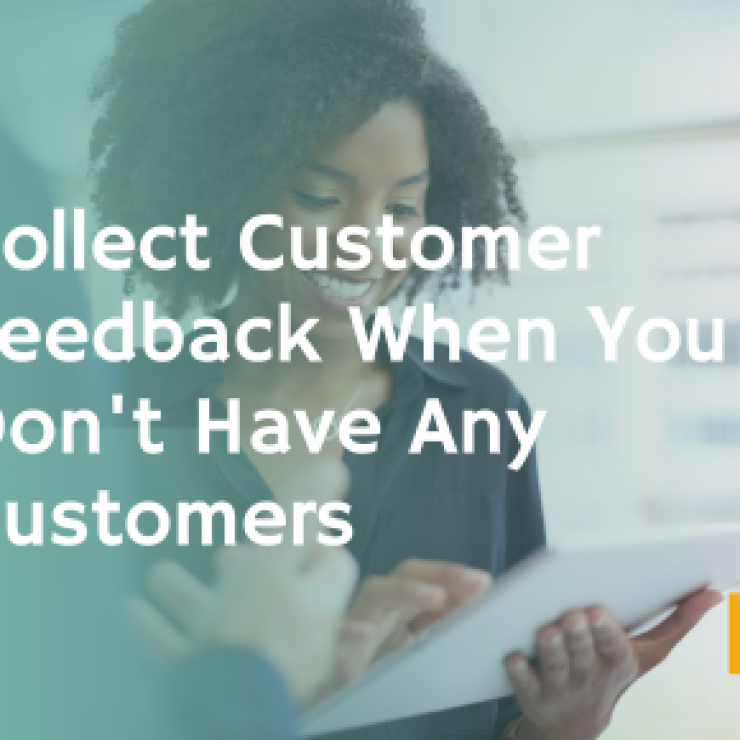Getting effective feedback from users is the key to SaaS growth.
Looking at the best solutions for user feedback can help you focus on the most important problems. Another benefit is that good feedback tools and practices provide valuable information on which you can take action.
Although close examination of customer feedback can be difficult, complex, and even heartbreaking at times. But, don’t give up!
So, what is the best way to get feedback without being overbearing? And how can you optimise the quality of the feedback at the same time?
Well, this article is about collecting customer feedback and the importance of user feedback in the SaaS business.
Let’s find out!
About User Feedback
A user feedback survey means that you ask your customers for their opinion about your products and services. The aim is to find out how well your efforts are meeting their needs.
Gaining positive and negative feedback from users is crucial to improving and growing your product. It can be helpful to know exactly what aspects of your product to expand or adjust based on what customers like or dislike.
Before you start looking at gathering feedback and using it, consider why it is essential.
How important is user feedback to SaaS businesses?
Feedback may sound like a value judgement when you hear the term. However, your customers decide whether your product is “good” or “bad”. There’s a better way to look at it.
Consider feedback instead as a way to improve customer relationships. Customer feedback is considered the “voice of the customer” and is instrumental in assessing how well the relationship is going. Like in personal relationships, a healthy relationship requires communication about what works and what doesn’t.
Customers are likely to value a product that addresses their concerns and improves them, and they will appreciate this. When customers are satisfied, feedback can be a valuable tool to learn what made them happy and what they’d like to see in the future.
You can improve your product with User feedback
Finding out which specific features of your product annoy or delight customers is crucial to know if your product satisfies your customers.
The customer may be using the product in ways you had never imagined. Although the feature may not be wrong, the customer may be experiencing malfunctions. Understanding the intricacies of the customer experience will help you figure out how to improve your product.
A user feedback survey is a great way to pinpoint these specific areas where value can be delivered or enhanced.
You can base your decision on User feedback
Investing in your product can cost a lot of time and money. When you go to a restaurant, you might read the reviews first. So getting feedback from your customers reduces the likelihood that you’ll make an expensive mistake.
If a large portion of your clientele likes your product but is overwhelmed with the user interface, improving UI would be a better investment than adding new features. By presenting complex data to your team, you can also implement the necessary changes.
Reduce churn with User feedback
The feedback you receive from your users can be constructive in identifying implementation barriers and reducing churn. Many of your churn-fighting insights come from negative feedback, which you might not think is the most interesting. User reviews affect 88% of buyers!
Negative reviews are likely to reach most potential customers. Although a user has already left a bad review after churning, it remains a chance to learn and improve from that experience. Using tools like Feedsocio, you can elicit feedback earlier and prevent churn altogether. If you receive negative feedback before users churn, you’ll have the chance to fix problems and keep them.
What to think about when asking for customer feedback?
When asking for customer feedback, three things should be considered: How, When, and Where to ask.
Here we go!
User feedback: When to collect it?
A user’s context is essential when determining when to collect customer feedback. General questionnaires can help get an overview of user sentiment, but most may not provide much actionable information. Consider the user journeys: on which map are they located, and what impacts their journey when using the product?
Your product becomes more effective whenever you ask specific questions about the user’s experience. Power users tend to see new features differently from primary users. You can get this type of contextual data by targeting your surveys on specific features, experiences, and user segments when collecting feedback from users.
The following moments are critical for gathering feedback.
Get feedback when creating a new feature
As you develop new features, your users can be a powerful resource, even if you don’t want them to influence every decision you make. By asking them for feedback, you will know whether the features accommodate their needs.
Get feedback on proposed new features, you can learn how users use them. By learning what users expect, you can start delivering more significant value than relying solely on your assumptions.
Brand-new users and professionals require different approaches to adding functionality. If you are adding a new feature, make sure it is tested on a small group of users. Determine which segment of your users can provide the best feedback regarding your goals.
Ask for feedback after first interacting with a feature
Once your product is developed, make sure to interact with your users once finalised. There is no better way to determine if a new feature delivers the value you hoped it would once a customer tries it out for the first time. With feature surveys, this data can be collected most effectively. Ask a user two or three questions after they test a new feature.
When users cancel or downgrade their accounts, ask for feedback
An effective way of measuring churn is to conduct a survey. Use a short survey to get feedback on why a user has stopped using one or more of your products.
Continually improve by asking for feedback
The development of your product should not stop once it has been launched. Keeping track of customer feedback is just as crucial as product improvements! Depending on how well your customers receive your product, their needs and usage patterns may change.
When micro surveys are triggered after a product has been used for some time, you can determine how well it has delivered value.
How to collect user feedback?
Among the most common feedback forms are:
- Checklists: You can think about multiple-choice questions, where users select an option from a list.
- Multiple-choice: It is similar to picklists, except that users can choose several options.
- Scale of ratings: Rating scales can be accessed through the star ratings. These offer quantitative data on user satisfaction.
- Text in open format: An answer to a quantitative question that focuses on the “why” of the response.
Where to seek feedback?
What is the best place to implement this kind of user feedback? Ultimately, the feedback venue determines your goals for the resulting data.
Let us take a look at each option in turn:
Apps that collect user feedback
Using FeedSocio inside your product is the key to receiving timely feedback. By setting them up after specific behaviours, you can be sure that you receive prompt feedback. Paper surveys offer greater engagement and are easier to remember.
Collect granular feedback from your users. With the data collected, you can segment them based on personas, decide what features are most important to them, and more.
Compile user feedback on the website
Using your website’s feedback forms, you can learn what attracts traffic and what conversion barriers may exist.
A few questions to consider are:
- What brought you to our product?
- What made you sign up?
- Why haven’t you signed up yet?
Using email to gather user feedback
Email still has a place in collecting feedback, even though in-product surveys may have a higher engagement rate. Use Email to collect user sentiment since users will not be in the app. As a bonus, you reach customers who may not regularly log in to your app.
Collect feedback from users by observing them
Surveys and questions don’t provide all the insights you need. Observing how customers use your product can give you crucial information.
When you record a session, you can learn exactly why your product succeeded or failed. By observing the user’s usage behaviour, you might be able to support a user who doesn’t understand why a particular feature isn’t working.
Get customer feedback with SAASFE!
Hopefully, this article provided you with enough details about the ways to collect feedback for your SaaS product. Your business will benefit significantly from any constructive feedback your customers give you.
As you take this journey of providing your valuable feedback, Saasfe has your back, and this tool has some unique abilities that will improve the customer service experience. So get ready and start taking action.




